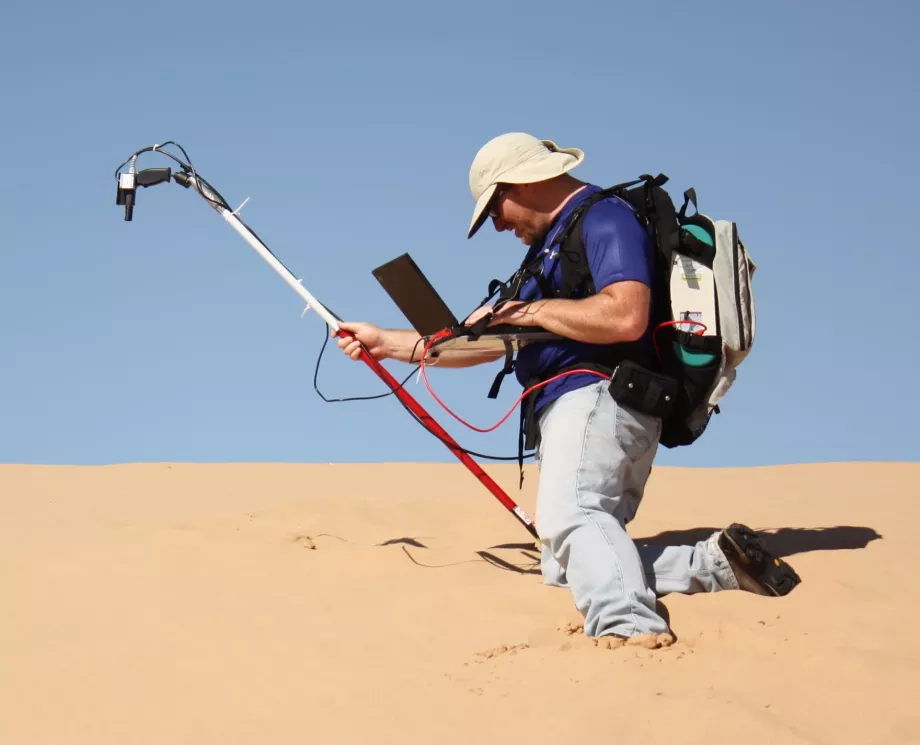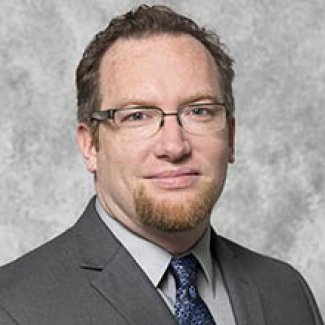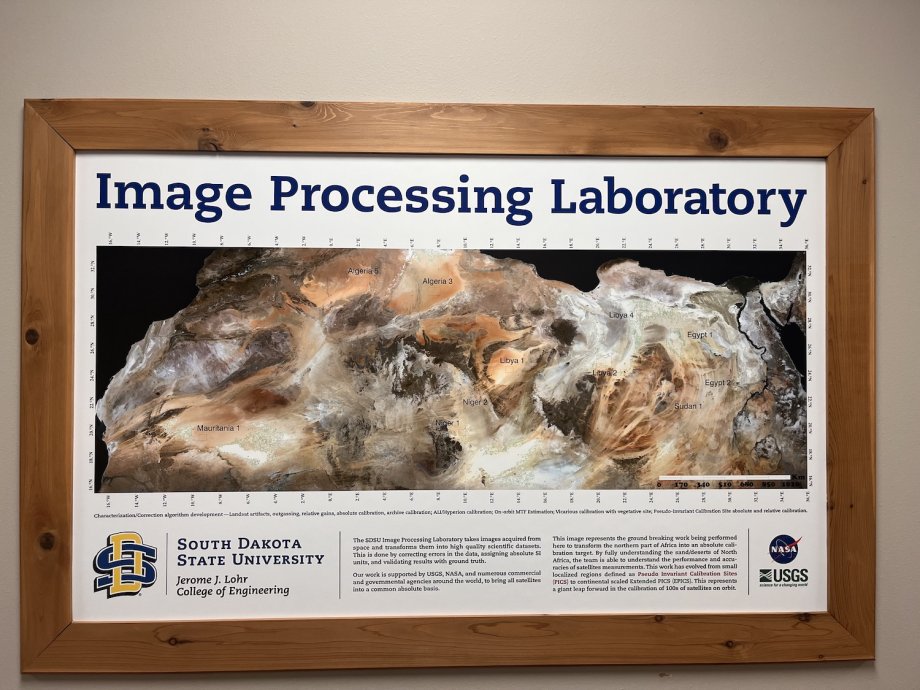
Since 2019, Larry Leigh has been the director of South Dakota State University's Image Processing Lab, continuing a tradition of excellence that started with Distinguished Professor Emeritus of Electrical Engineering Dennis Helder.
But if things had gone according to plan, Leigh's life might be completely different.

It was summer 1999, and Leigh was a soon-to-be graduate from what was then known as SDSU's College of Engineering (now the Jerome J. Lohr College of Engineering) working on a research project for NASA in Huntsville, Alabama. He had spent the prior two summers at NASA and had a growing notion that vibroacoustic engineering—Leigh's academic specialization, a niche field that studies the vibrations caused by sound, in this case, in rockets—was something he would like to pursue professionally. Nearing the end of his final summer, NASA offered him a job. There was just one problem: Leigh had one semester left to finish before he would graduate with a master's degree.
"I asked them if they could hold the position open while I finished the degree," Leigh said.
He returned to Brookings to finish his degree, eager to get back to Alabama and his work for NASA. Unfortunately, this came at a time when America's interest in space exploration was waning. NASA, which in 1995 began cutting $5 billion from its budget, went into a hiring freeze.
"I found myself sitting there thinking about how I still wanted the job," Leigh said. "I decided to hang out and wait for the opportunity to open up again. I started a second master’s degree in physics while I waited."
At the same time, Leigh started working in the most space-centric program SDSU had to offer: the Image Processing Lab. Founded in 1988, the lab worked—and continues to work—closely with the Earth Resources Observation Science (EROS) Center near Sioux Falls. The EROS Data Center operates NASA's Landsat satellite program and partners with SDSU to calibrate the imagery produced by the satellites.
Leigh became more and more involved with the lab. At the time, SDSU’s physics department did a lot of the necessary fieldwork required to calibrate the satellites. Leigh began working closely with David Aaron, a professor in the physics department. They started doing most of the fieldwork for the lab which was something Leigh enjoyed.
As the year's went on, Leigh's NASA aspirations began to fade as he moved into elevated roles for the lab, first as an image processing engineer and then as assistant director. After Helder retired in 2019, Leigh moved seamlessly into the lab’s director position and hasn't looked back.
Now, he oversees a team of 7 to 10 students and two to four staff members—depending on the time of year—who are either conducting research on satellite calibrations or determining the operation coefficients necessary to calibrate the satellites for their various partners.
"I enjoy the work I do," Leigh said. "Obviously there are some things—like accounting—that I don't like as much, but working with the students keeps me coming back into the office. It makes it fun."
Nationally renowned lab

SDSU's Image Processing Lab, located on the top floor of Daktronics Engineering Hall, is nationally renowned for its work on satellite calibration.
What primarily started as a research lab has turned into a full-fledged operation, with federal agencies like the U.S. Geological Survey, NASA and the Intelligence Advanced Research Projects Activity and industry leaders like Google seeking partnerships or contracts with the lab. Sometimes even countries will reach out to Leigh for help in calibrating their newly launched satellites.
"We've worked with Turkey, Spain, Brazil, the U.K., Thailand—we've worked with countries around the world," Leigh said. "When they launch a satellite and need to calibrate it, they reach out to us. We've also trained people from a lot of different countries."
The lab has positioned SDSU as a leader in the application of remote sensing, alongside the Rochester Institute of Technology and the University of Arizona. With two test sites within city limits and two more in the greater county, the lab has also positioned Brookings in a rather unique spot.
"Brookings is probably the most imaged spot on the planet because we are here," Leigh added.
- Contact:
- Telephone number: 605-688-6161
Republishing
You may republish SDSU News Center articles for free, online or in print. Questions? Contact us at sdsu.news@sdstate.edu or 605-688-6161.

